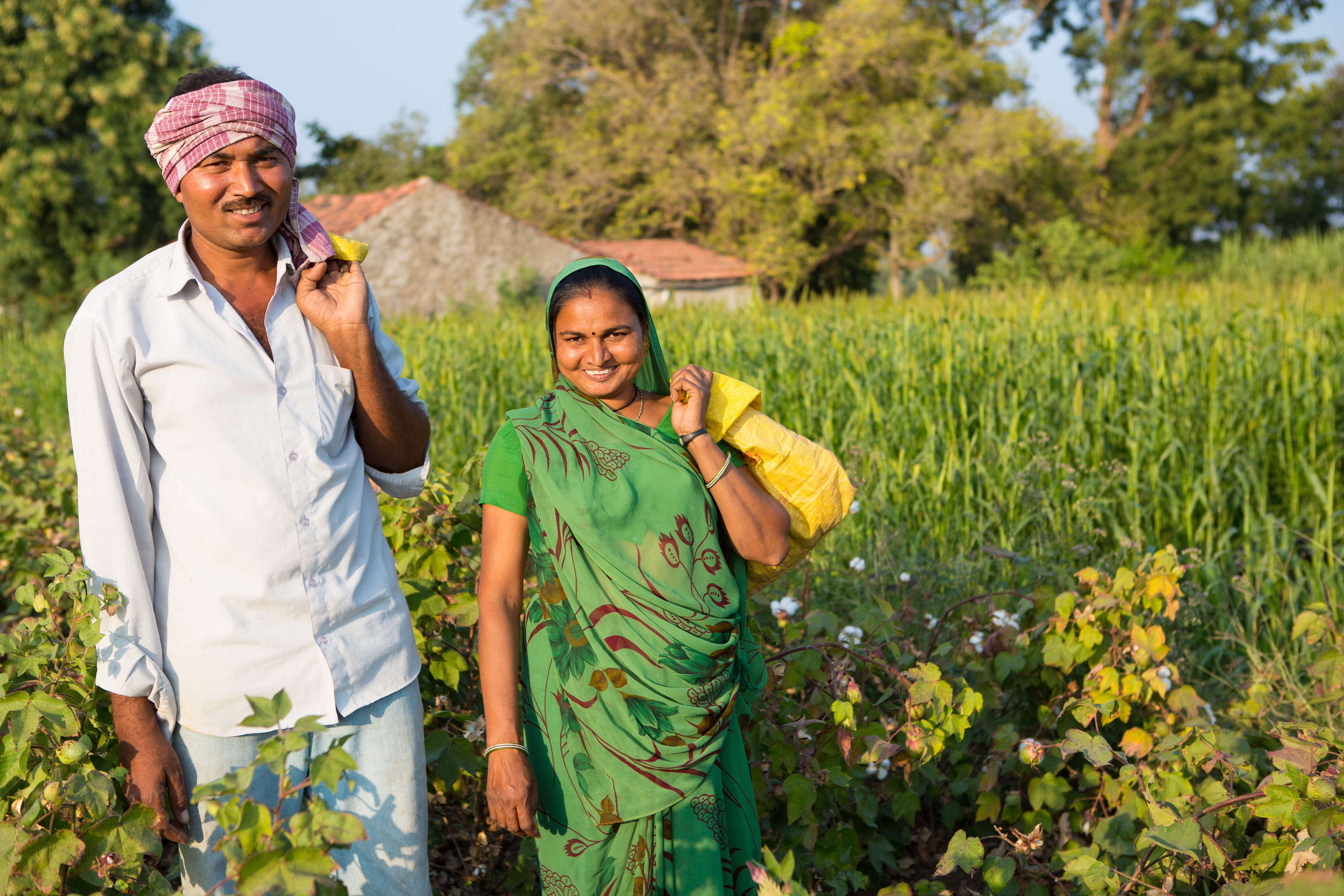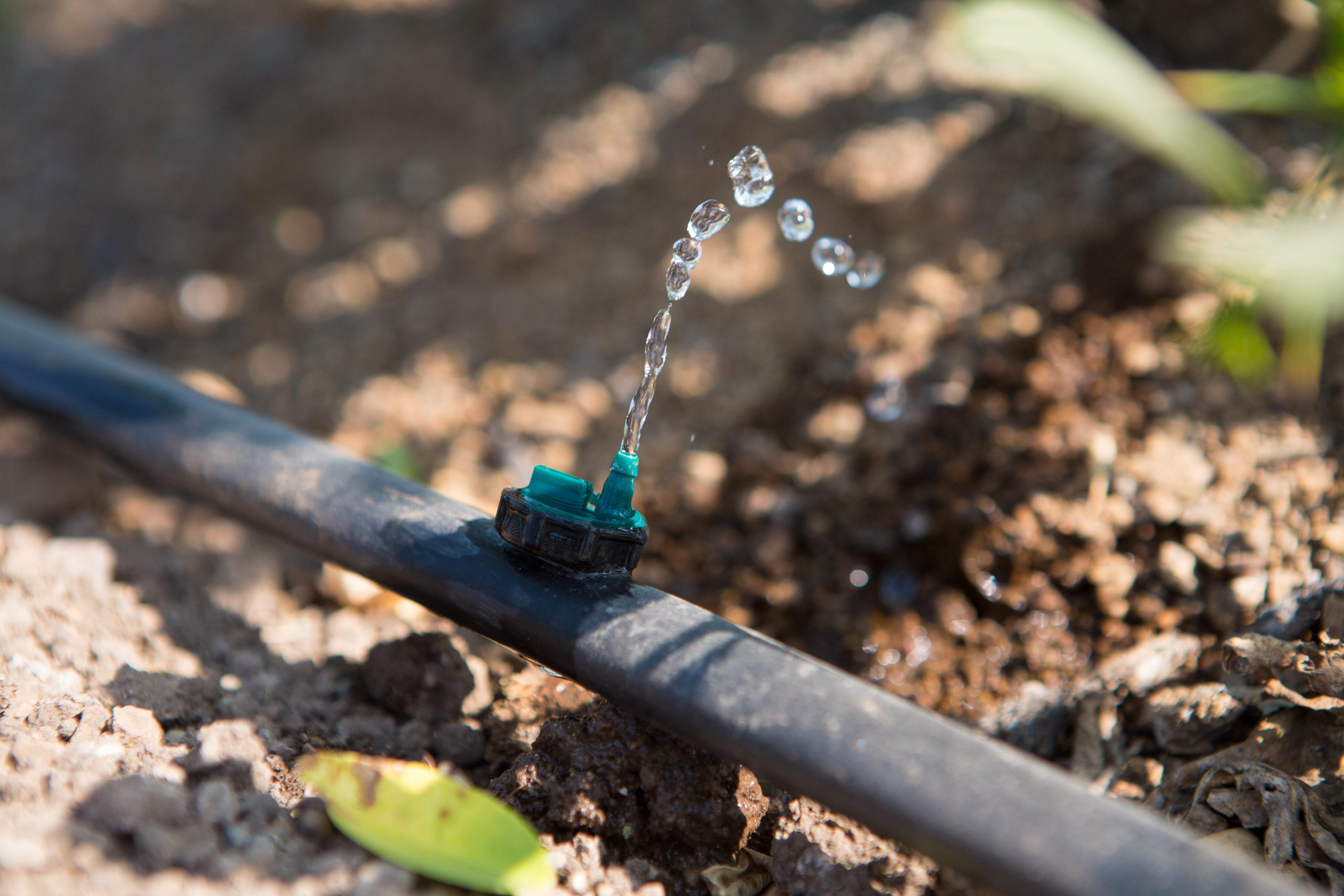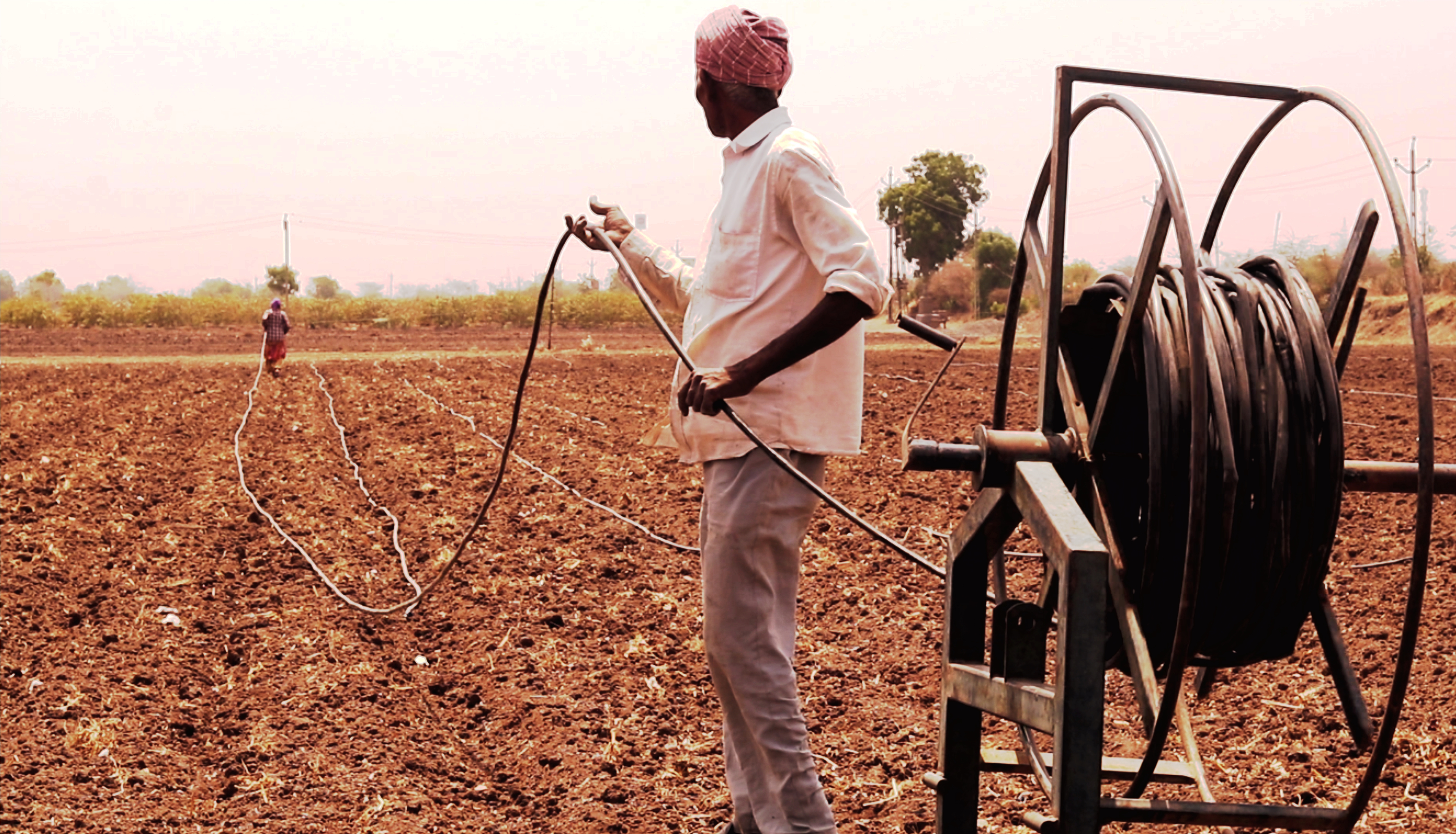THE DRIP POOL IRRIGATORS OF GUJARAT
Devolve decision making
Address structural inequalities
Invest in local capabilities
Build understanding
Flexible programming and learning
Collaborative action and investment
Photo credit: Aga Khan Rural Support Program - India
As narrated by Naveen Patidar, Executive Director, Aga Khan Rural Support Program, India.
Residents of Surendranagar, Rajkot, and Morbi Districts in the state of Gujarat, India, have always been used to swings in temperature from season to season: from a low 7°C to a high of 45°C. Now this largely agricultural region is bearing the full brunt of climate change, putting farming livelihoods and food security under stress in the area. The high temperatures are steadily creeping up because of climate change and droughts have become more prevalent. At the same time, episodes of heavy rainfall and flooding now occur more frequently. The dual problem of floods during the monsoon season and droughts in summer has led the area to be classed as a climate change hotspot within India. Climatic changes contribute to water scarcity, soil salinity and sodicity, desertification, and declining agricultural yields. Farming households were initially not well prepared to adapt. Over one-third of residents in Surendranagar live in multidimensional poverty.
In this context, the Drip Pool Irrigation Program is a locally led initiative developed by and for farmers, to help them mitigate climate risks and enhance agricultural productivity. By combining technology, finance, and community collaboration, the program has enabled small and marginal cotton farmers in the Surendranagar, Rajkot, and Morbi districts to adopt drip irrigation and build resilient farmer institutions. Drip irrigation is a highly efficient way of delivering precious water resources straight to the roots of the crop, targeting water where it is most needed.

The Drip Pool Irrigation Program was initiated by the Aga Khan Rural Support Programme – India (AKRSP-I), a non-governmental organization, in 2010, with the support of the C&A Foundation and its partner, Cotton Connect. Recognizing the financial constraints faced by farmers in accessing drip irrigation technology, the Drip Pool Irrigation Program introduced a community financing mechanism. This mechanism offered interest-free loans to farmers, enabling them to purchase drip irrigation units and access a subsidy from the Gujarat Green Revolution Company Limited (GGRC), an implementing agency for micro-irrigation, of the state and federal governments. (“Pool” in the name of the program refers to this “pool fund” system for providing subsidized loans.)
Drip Pool Irrigation Program Spreads Climate Resilience among Farmers
Addressing the region’s climate challenges effectively and uplifting the livelihoods of affected rural communities called for robust and locally led adaptation strategies. This was especially true in the water resources sector. The scarcity of water in the area called for proactive water-saving measures, particularly in agriculture, on which communities depend for their livelihoods. The success of the Drip Pool Irrigation Program relied on two core components: technology and finance.
The technological aspect involved promoting the adoption of drip irrigation in cotton cultivation, emphasizing its potential to save water and increase profits. Simultaneously, the community financing mechanism provided farmers with loans that were repaid over two years through monthly installments. Repayments were reinvested into the community fund, allowing for the circulation of funds and extending the benefits of drip technology to more farmers.

The Drip Pool Irrigation Program reached 1,352 farmers in its initial phase, focusing on cotton cultivation. Building upon these achievements, it was then scaled up to four districts in the region. A key addition to this phase was the emphasis on “farmers’ institution development”. Four Farmer Producer Companies (FPCs) were established, to engrain the technological and financial benefits of the program into the fabric of the communities. These FPCs took on the responsibility of managing agri-input purchases and output sales for the member farmers. By 2020, the program had reached an additional 9,750 farmers.
In the pursuit of a community-driven and locally led approach, the selection of villages and farmers for the Drip Pool Irrigation Program was based on factors such as the number of small landholders, available irrigation sources, existing penetration of drip irrigation, and overall livelihood opportunities. AKRSP-I organized village meetings and facilitated knowledge exchange visits to other villages to raise awareness about the benefits of the program. By employing the principles of “seeing is believing” and “learning by doing”, the field team enabled farmers to witness the advantages first-hand and encouraged them to embrace the program.
The implementation of the Drip Pool Irrigation Program valued and included input from the farmers. A team of program staff and development officers at the village level worked closely with farming households to identify suitable loan recipients, determine loan amounts and repayment schedules, and ensure timely recovery from the farmers. Selected farmers received agronomic training and support to adopt improved agronomic practices in cotton cultivation and water management. Farmers reported that this form of engagement shaped the program to be farmer-friendly.
By promoting a farmer-driven model, the Drip Pool Irrigation Program has brought numerous benefits to the farmers, positively influencing cotton crop cultivation practices and the overall environment. By addressing the financial and extension challenges faced by smallholder cotton farmers, the program achieved operational success and significantly contributed to the well-being of the community.

How Challenges are Addressed
The Drip Pool Irrigation Program did not encounter any major challenges where things did not work as planned. That said, the program staff identified some key watch points for future programs of this kind.
Structured repayment schedules reduce loan defaults. The program achieved a zero default rate in loan repayments because its workers maintained regular interactions with farmers to understand their situations and needs. Unlike other loan products, repayment schedules were not rigidly fixed. Instead, they were designed according to farmers’ cash flows from agricultural activities, as well as other sources such as dairy and horticulture. The establishment of a community financing mechanism managed by the farmers themselves, allowing lending to other farmers in need, fostered a collective responsibility for timely repayment: the FPCs.
The formation of farmer organizations ingrained institutional sustainability. Participating farmers were organized into FPCs to benefit from collective economies at both the input and output stages of the agricultural value chain. These FPCs received training in adopting better practices and group management. The goal was for these institutions to independently manage community finance and extend the reach of the Drip Pool Irrigation Program, ensuring its continuation after external support concluded. Going forward, FPCs would charge a token interest on loans to cover administrative and operational costs.
Water saving went beyond drip irrigation and the program embraced an integrated water resources management approach. The work of the Drip Pool Irrigation Program highlighted that adopting drip irrigation and similar technologies alone is insufficient to address water scarcity in the region. In areas with limited water availability, the benefits of drip technology are constrained. Therefore, there is a need to emphasize an integrated approach that promotes water harvesting, conservation techniques, and the adoption of drip irrigation. Consideration should be given to allocating a portion of funds for these activities and the conservation of water collected during the rainy season. This would ensure a more consistent water supply throughout the year and increase cropping intensity in the intervention areas.
Supportive government institutions enhance program delivery. The presence of GGRC at the state level played a crucial role in shaping the financial and institutional framework of the Drip Pool Irrigation Program. GGRC’s initiative to subsidize the installation of micro-irrigation technologies in the state greatly influenced the program’s design. The program’s success would have been challenging without this Gujarat government scheme and the GGRC’s support. Transparency and official monitoring also played vital roles in sustaining the program’s effectiveness.
While the program has achieved commendable results, significant attention was required to planning and ensuring its long-term financial sustainability. The Drip Pool Irrigation Program recognized the need to develop mechanisms that go beyond initial financial support and focus on creating self-sustaining community-based financial institutions. This included establishing FPCs (which would pool savings to offer loans to members) and exploring market linkages, to create enduring income generation opportunities.
The success of agricultural interventions in this region relies heavily on effective extension services. The ability of these extension services to provide farmers with training on improved agronomic practices and water conservation techniques was crucial for maximizing the benefits of the Drip Pool Irrigation Program. Furthermore, strengthening the partnerships between agricultural extension services and government institutions, agricultural universities, and knowledge centers enhanced the reach and quality of extension services, ensuring farmers have the necessary skills and knowledge to adopt and sustain best practices. An advisory committee consisting of experts from organizations such as the International Water Management Institute, Indian Institute of Management, Navasari Agriculture University, and senior members from the Aga Khan Foundation and the C&A Foundation guided good agricultural practices and emerging crop solutions.
These key lessons have provided AKRDP-I with valuable insights into the areas that require further attention and improvement. By integrating these learnings into future initiatives, the organization aims to enhance the impact and sustainability of its programs, contributing to the well-being of the communities they serve.